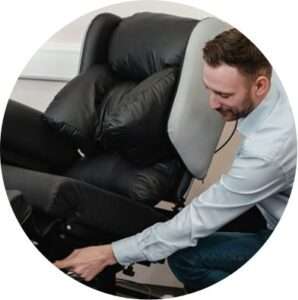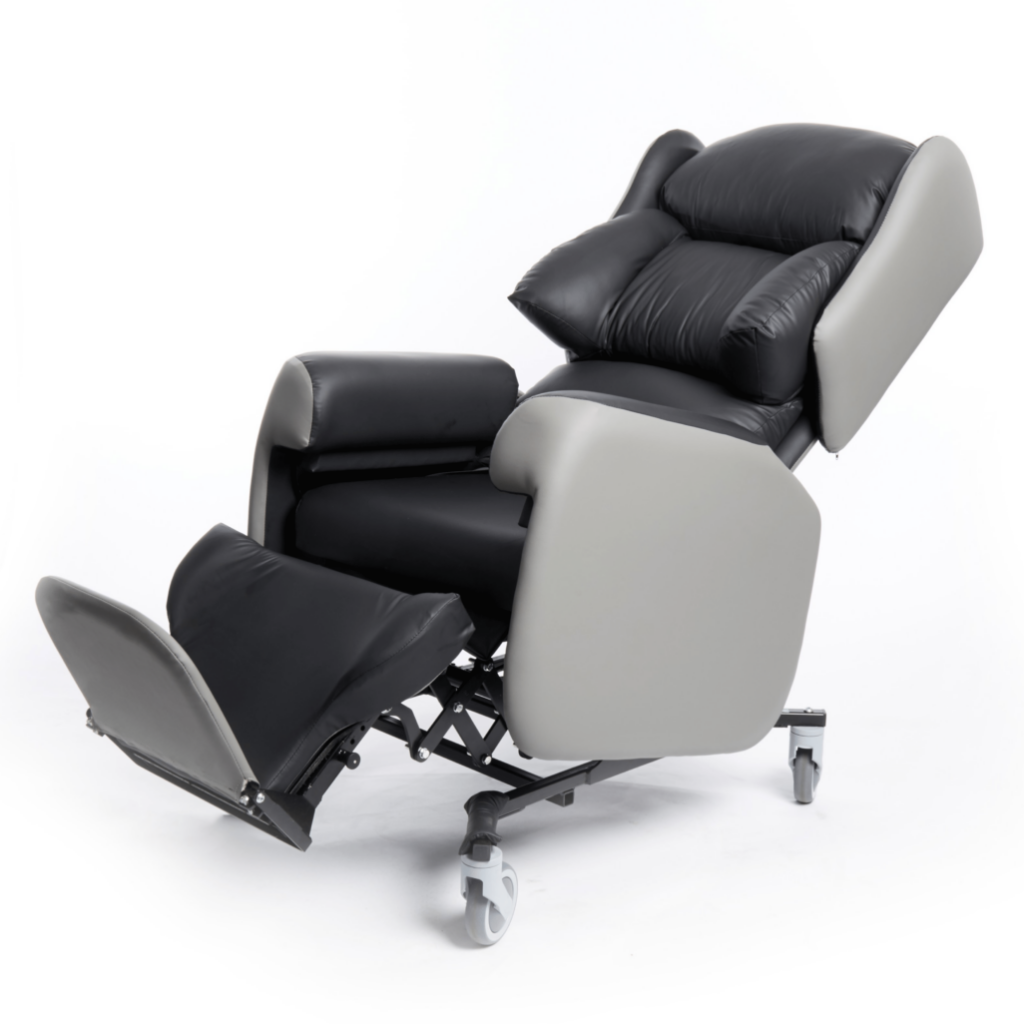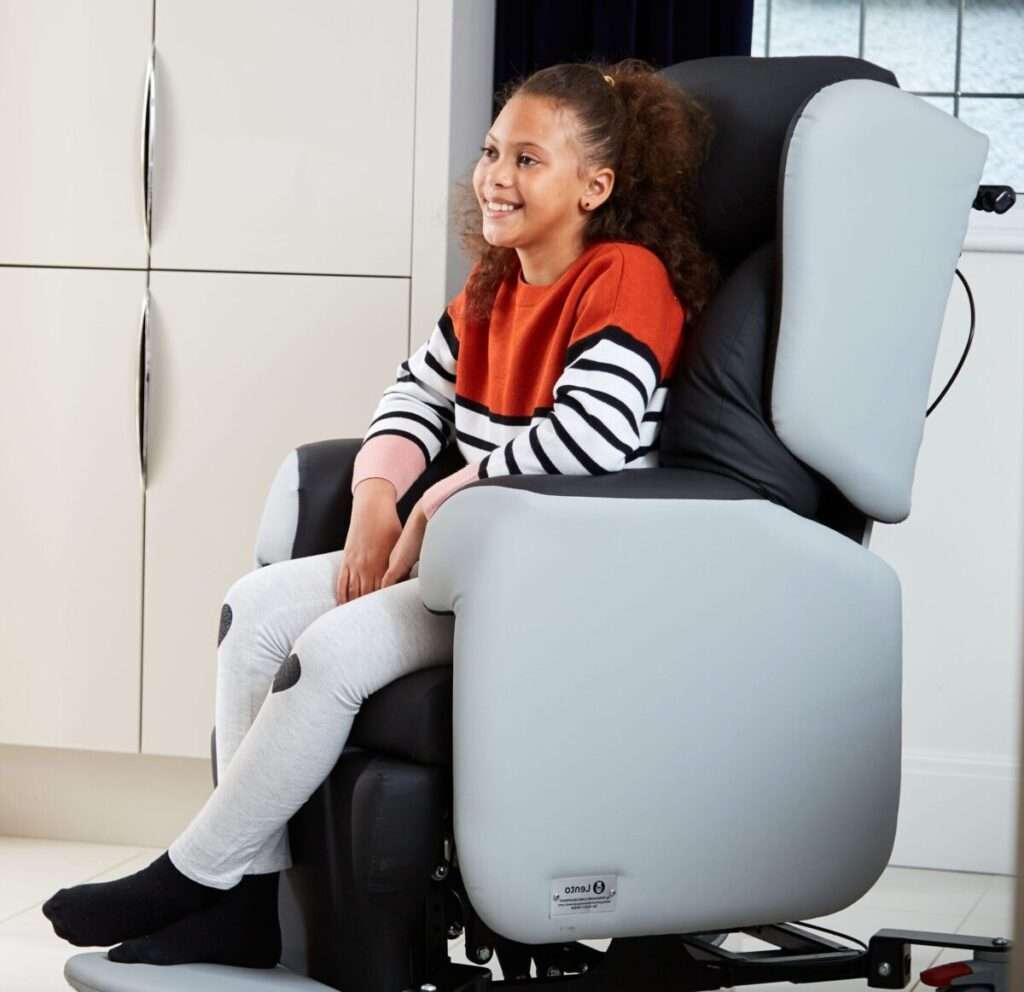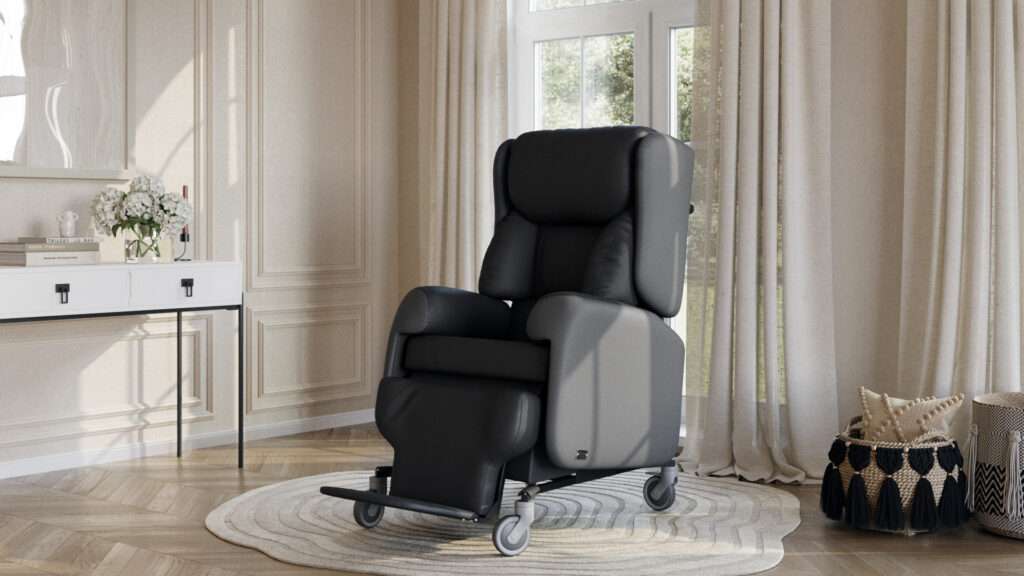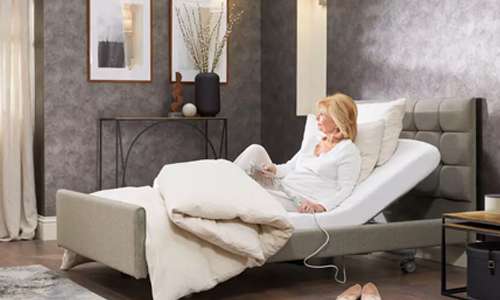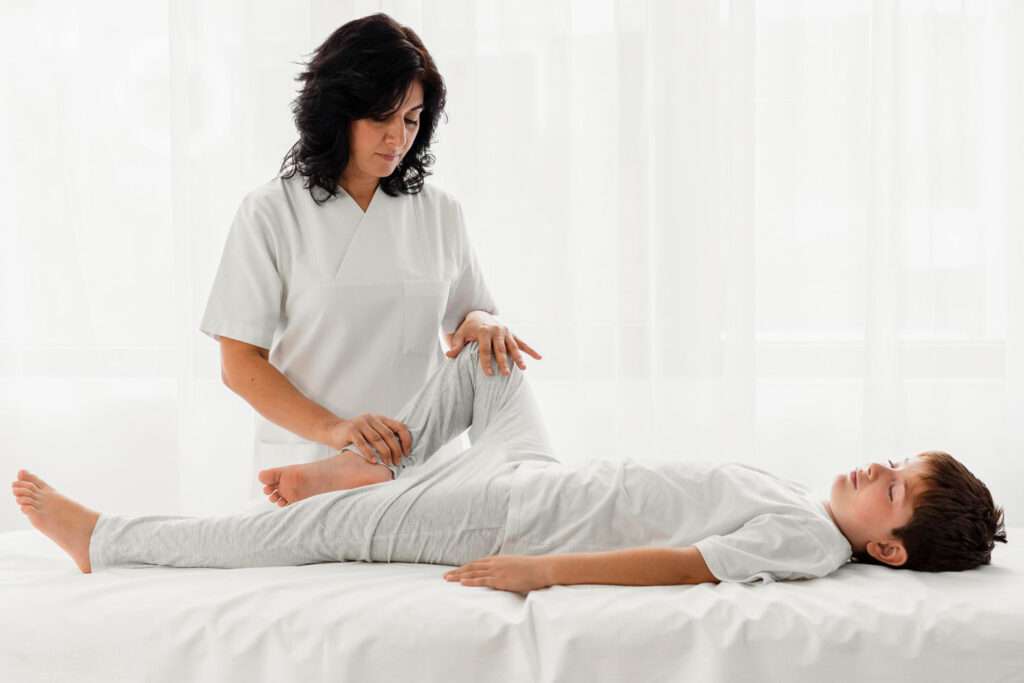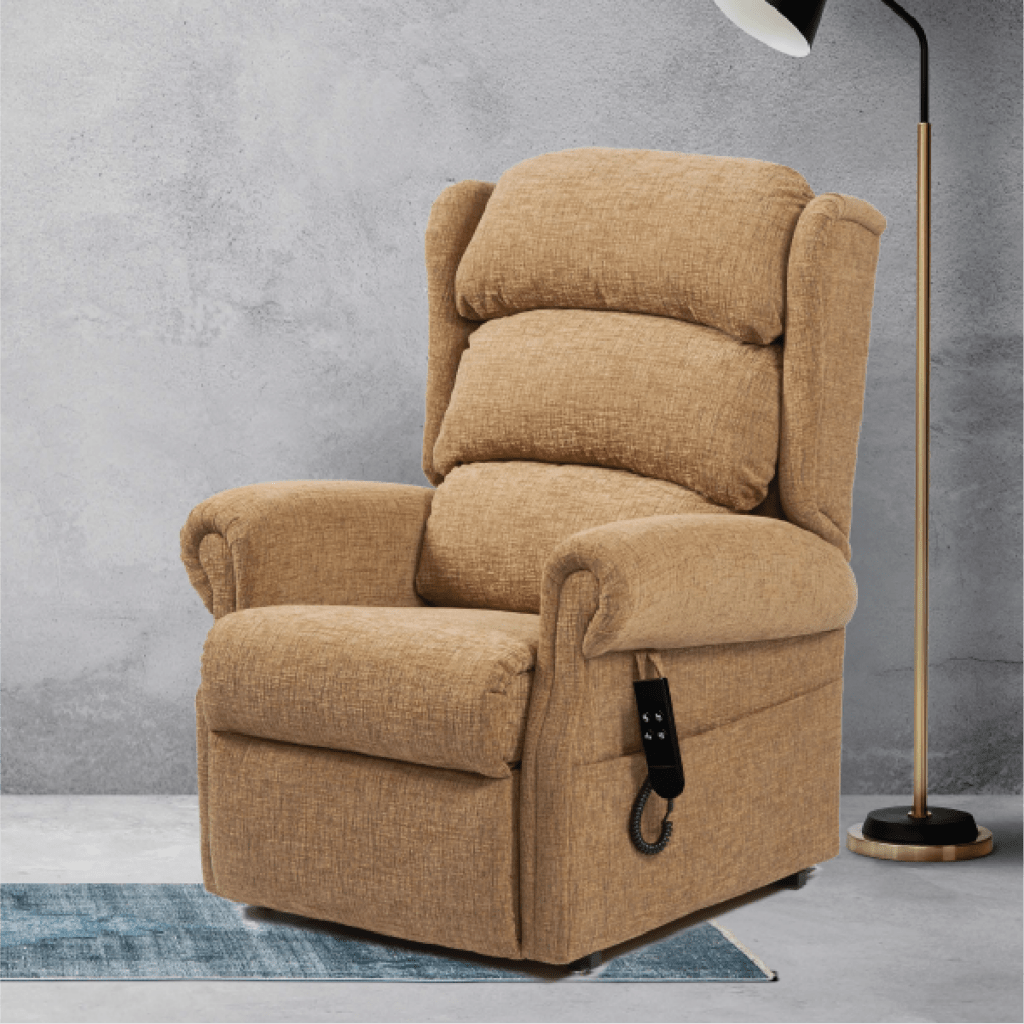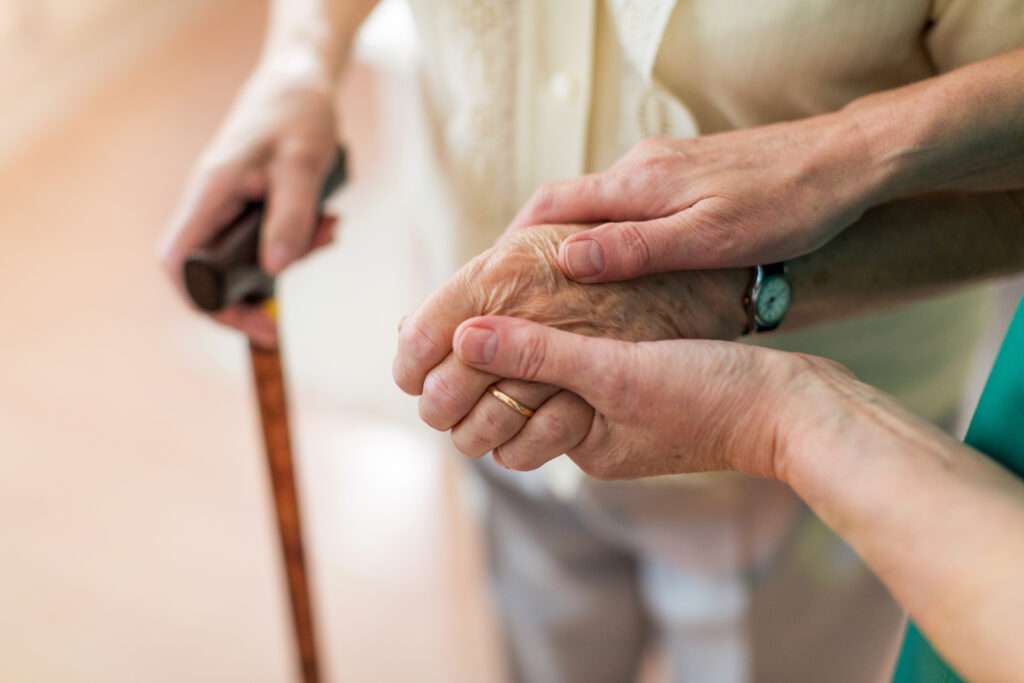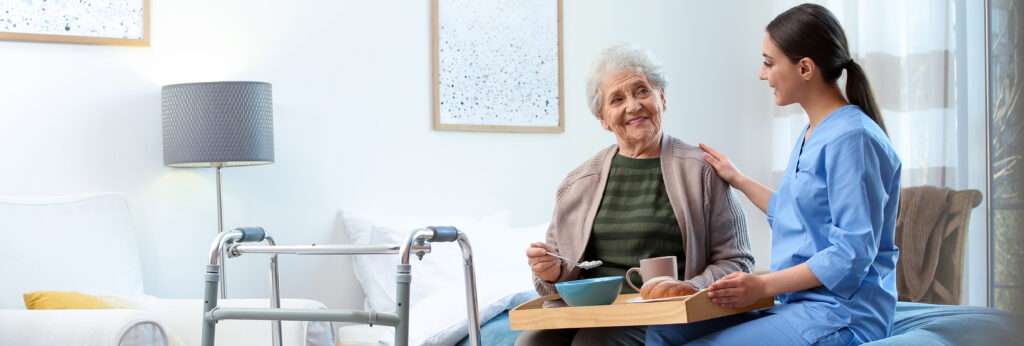When considering seating solutions, particularly for individuals with specific medical conditions, proper foot support is often overlooked. However, ensuring the feet are adequately loaded can play a crucial role in comfort, pressure management, and overall well-being.
Jump straight to…
Why Foot Loading Matters
Approximately 19% of an average person’s body weight is distributed through the ankles and heels when sitting in an upright position. The absence of proper support or loading in this area transfers this extra body weight to the thighs, which can cause pressure, discomfort, pins and needles, skin reddening, and even pressure ulcers.
For certain patient groups, such as those with bariatric conditions, lower limb oedema, or diabetes, proper foot loading is even more critical. These individuals are more susceptible to pressure ulcers in this area and require extra pressure management to prevent complications.
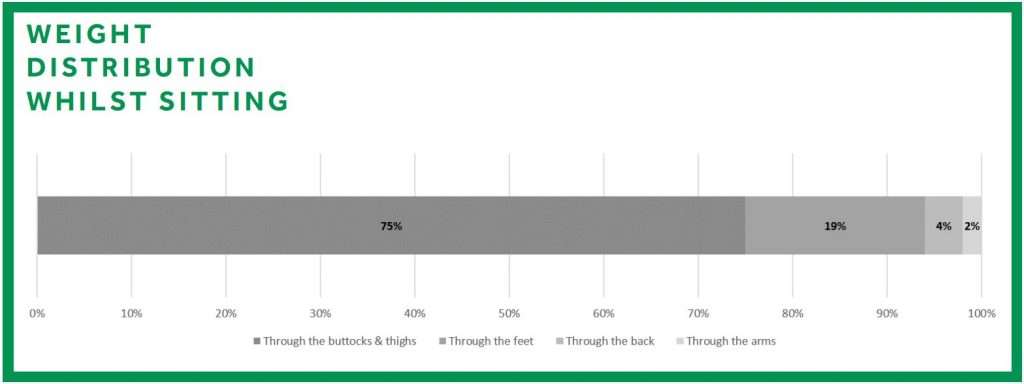
Weight distribution while sitting in an upright position
Care Chairs and Footplates
Care chairs are used for more complex postural management, and provide head-to-toe postural support from the headrest all the way through to the legrest and footplate.
The Lento Care Chair loads the patient’s weight evenly throughout the chair, by supporting their feet with the cushioned footrest. The footrest can be height or angle-adjusted to suit the client, and support those with foot contractures or plantar flexion.
When using the tilt-in-space function in care chairs and riser recliners, the weight distribution is shifted more evenly across the body, reducing loading through the feet and thighs and spreading this across the upper body.
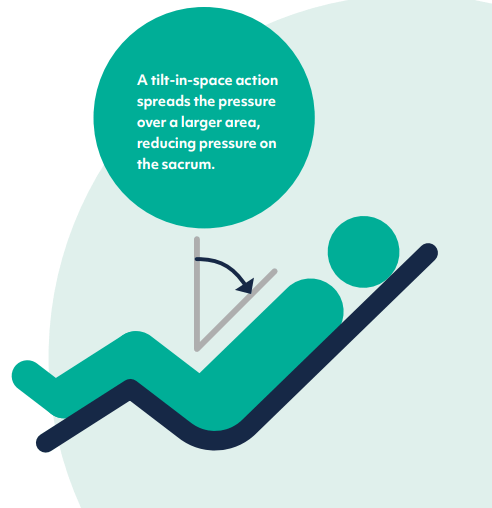
Tilt-in-space
Riser Recliners and Footplates
Riser recliner chairs are generally used for patients with less critical care needs, and are more contemporarily styled to look at home in a domestic setting.
More standard recliners such as the Dales range are mounted on feet rather than castors, and seat height measurements are taken with the patient’s feet resting flat on the floor for support. As such they would not usually have a footplate, as this could present a tripping hazard in communal care settings.
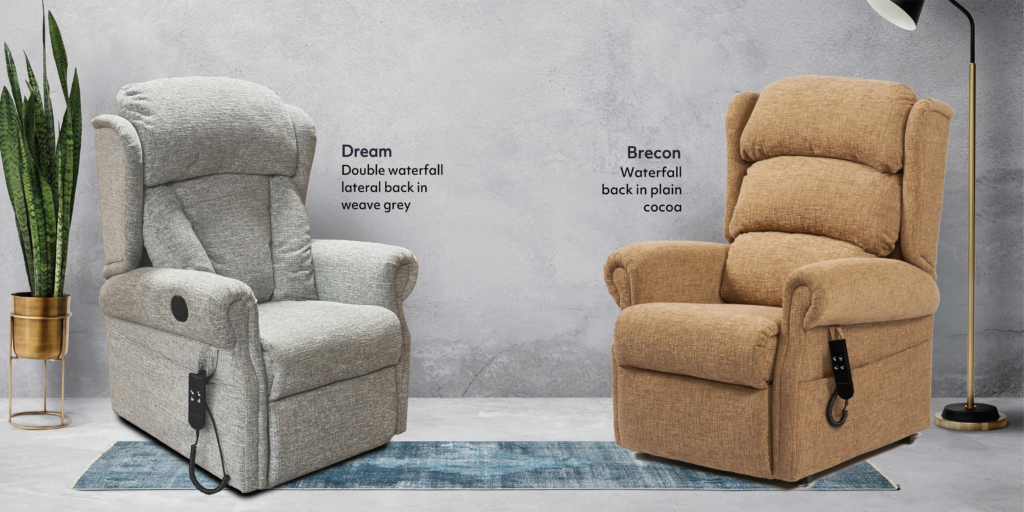
Dales Collection
To correctly load the feet using a riser recliner, the seat height (floor to top of seat cushion) is a critical measure to get right. The patient’s feet need to be flat on the floor when they are sitting right up against the backrest, to prevent any slouching or sliding. When tilt in space is used to lie back in the chair, the legrest is designed so the bottom edge is in line with the patient’s ankle, and the heels extend over the edge of the legrest to prevent pressure sores on the sensitive heel area.
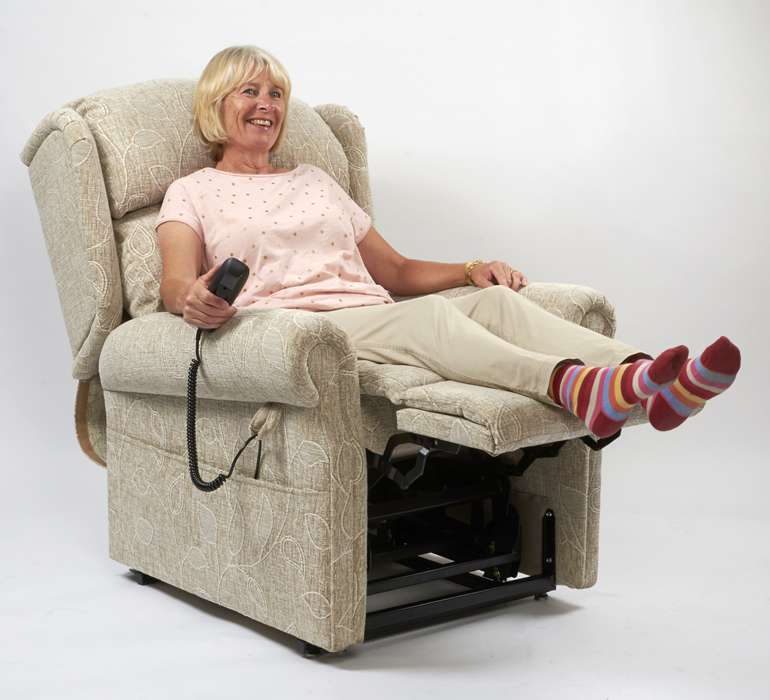
Heels over the bottom edge of the legrest
The Top Three Benefits of Using a Footplate in Specialist Seating
Using a footplate with specialist seating helps to add extra stability, and improves the client’s posture, range of functional movement and overall levels of comfort.
Pressure Management
Proper foot support helps distribute body weight evenly, reducing pressure on more vulnerable areas.
Without properly supporting the 19% of body weight that goes down through the feet, this would transfer to the buttocks and thighs, creating a higher degree of pressure in the seat area that could lead to pressure sores around the ITs and shear skin damage.
Stability
A footplate enhances postural stability, minimising the risk of sliding or falling out of the chair. Split footrests are available for those with leg length discrepancies, to enable a centralised posture.
Without this provision, the client’s feet would hang in mid-air, which as well as causing the tendency to slide forward and sit sacrally, can feel very uncomfortable and significantly impact the client’s wellbeing.
Increased Functionality
A footplate that keeps the feet level and equally supported promotes a feeling of balance and support in the chair. When care chair users feel more secure in this way, this can boost confidence and core muscle strength, improving their ability to transfer and aiding overall mobility.
How to Correctly Load the Feet
Ensuring feet are correctly positioned and supported can make a significant difference in comfort and safety. A well-adjusted footplate should:
- Be at the correct height to allow even weight distribution.
- Support the entire foot, preventing dangling or uneven pressure points.
- Be positioned to maintain proper lower limb alignment, avoiding unnecessary strain on the spine and hips.
- Be adjustable to accommodate any deformity in the feet or ankles, such as plantar flexion. The angle-adjustable footplate on the Lento Care Chair is ideal for this purpose.
- Be specified correctly if the client has leg length discrepancies or limb amputations, e.g. a split footrest.
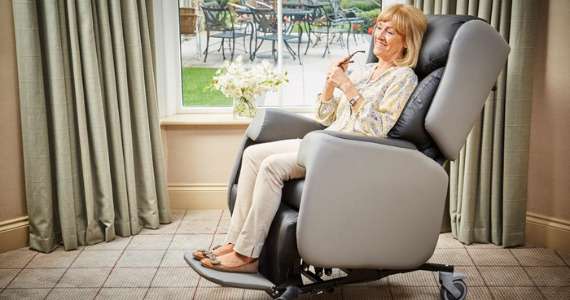
Loading and supporting the feet can be further enhanced with the range of seating accessories that are available.
- Ankle huggers – these help keep the legs vertically aligned for people who have movement issues, centralising and balancing their posture.
- Footplate pads are used to add extra cushioning for the feet, particularly for those who have fragile skin. This can also increase the footplate height by an extra 2 inches for those with shorter legs. Footplate pads can be manufactured to be different thicknesses on either side, to support those with unequal leg lengths below the knee.
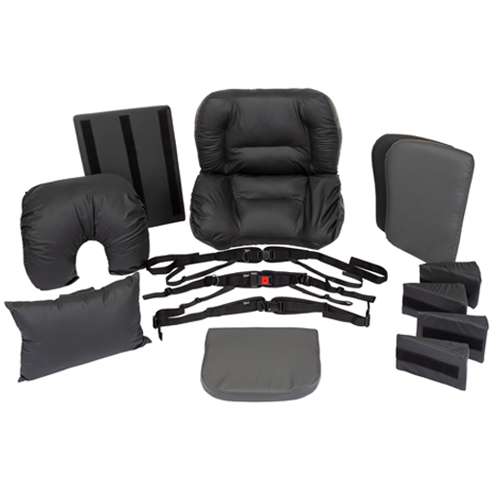
Footplates for Bariatric Patients
For individuals with bariatric conditions, the weight of the abdomen and legs significantly increases the load on the feet. In such cases, up to one-third of their total body weight may be exerted through the feet, compared to one-fifth in an average person.
This higher degree of loading on the legrest and footrest section requires specially-built chairs that can withstand this amount of force.
Our Lento Bariatric Riser Recliner supports clients up to 50 stone in weight and has a reinforced footrest section that can accommodate up to 25 stone, which is more than adequate for a 50-stone person that loads a third of their body weight through their feet.
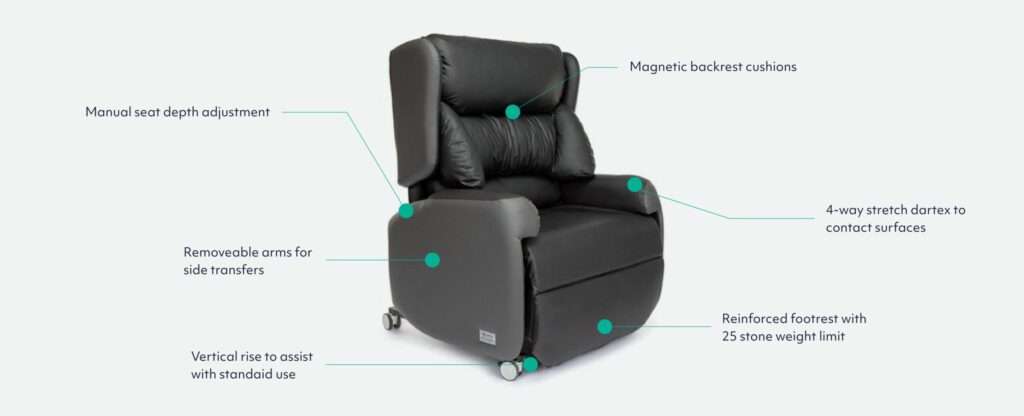
Lento Bariatric Riser Recliner
If a bariatric patient is using a tilt-in-space chair without a footplate, the additional weight causes their feet to dangle, leading to discomfort and pain. As well as creating blood circulation problems and swelling from blood draining to their feet, this imbalance can place excessive pressure on the spine and can pull the individual forward, further increasing the risk of instability and injury.
Download Our Complete Guide to Bariatric Seating
Conclusion
Ensuring proper foot loading in seating is a crucial aspect of patient care, particularly for those at higher risk of pressure-related complications.
By utilising footplates in specialist seating, patients can benefit from improved pressure distribution, enhanced stability, and increased overall function. Prioritising foot support can lead to greater comfort, safety, and wellbeing for seated individuals.
Get Expert Advice



